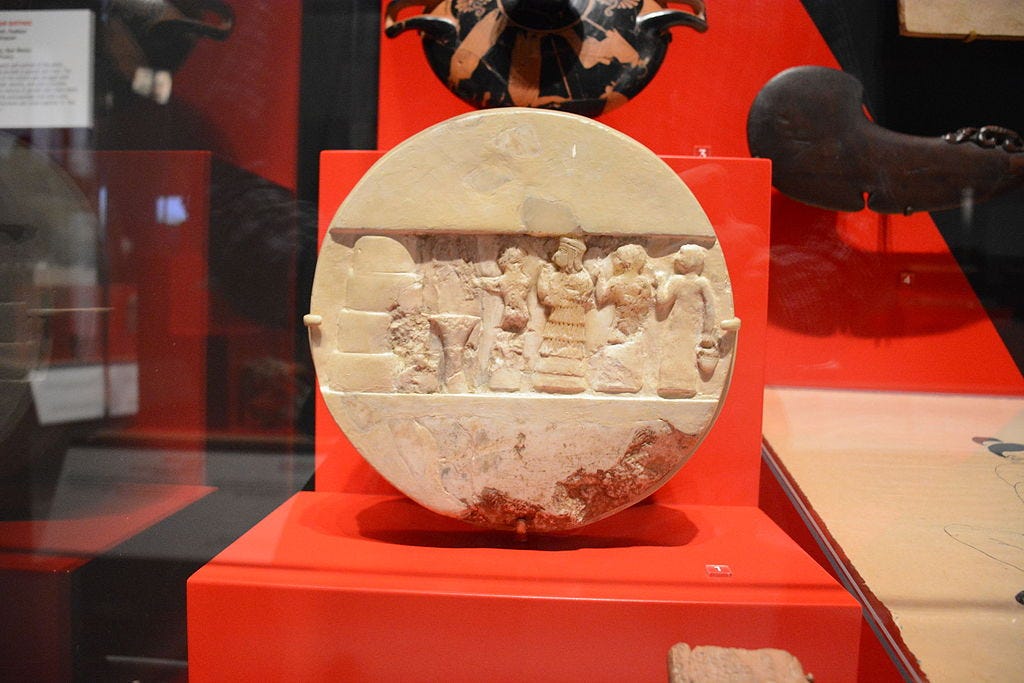Over 4000 years ago, cuneiform writing had just been invented. It served much the same purpose as a spreadsheet does today, keeping track of inventory, of goods bought and goods sold. It was an inauspicious beginning to the written word. The politics of early bronze age civilisations is a little hard to figure out. Sargon was an Akkadian who conquered Sumer, the first civilisation. By conquering a people who spoke a different language and had a different culture, Sargon became history’s first emperor. Sargon admired the Sumerians and wanted Akkadian and Sumerian cultures to coexist. But the Sumerians didn’t love having a foreign king. Sargon placed his daughter, Enheduanna, in the position of high priestess of a goddess Inanna. She had learned to read both Akkadian and Sumerian and composed hymns to Inanna. Her goal was to combine Sumerian and Akkadian religions into one pantheon.
The disk above is known as “Disk of Enheduanna.” Enheduanna is the third figure from the right. It resides in the University of Pennsylvania Museum of Archaeology and Anthropology.
Enheduanna is the first person known to have written the word “I”. In “A Hymn to Inanna",” she writes:
I am Enheduana, the high priestess of the moon god. ......; I am the ...... of Nanna.
Advice ......, grief, bitterness ......, 'alas' ....... My lady, ...... mercy ...... compassion ...... I am yours! This will always be so! May your heart be soothed towards me! May your understanding ...... compassion. May ...... in front of you, may it be my offering. Your divinity is resplendent in the Land! My body has experienced your great punishment. Lament, bitterness, sleeplessness, distress, separation ......, mercy, compassion, care, lenience and homage are yours, and to cause flooding, to open hard ground and to turn darkness into light.
I imagine that writing the word “I”—a common word in speech—must have been like a thunderbolt for Enheduanna. And her hymns and prayers would remain common for hundreds of years, partly because the worship of Inanna survived and continued beyond the demise of the Summerians. Inanna was considered to be the same as Ishtar, an Akkadian goddess. Ishtar survived into Roman times and is thought by some to be the origin of “Easter”.
But far more than dwelling on an ancient goddess of war, sex, the moon, etc., what interests me is a woman writing about her feelings as she talks to Inanna. For the first time in human history. Enheduanna couldn’t have known this, but surely she was aware that the cuneiform hadn’t been used in this way before her—at least, she didn’t study literary works because as far as we know, there were none to be studied.
People who love to read should raise a toast to Enheduanna.
[And please consider supporting my work by becoming a patron.]




